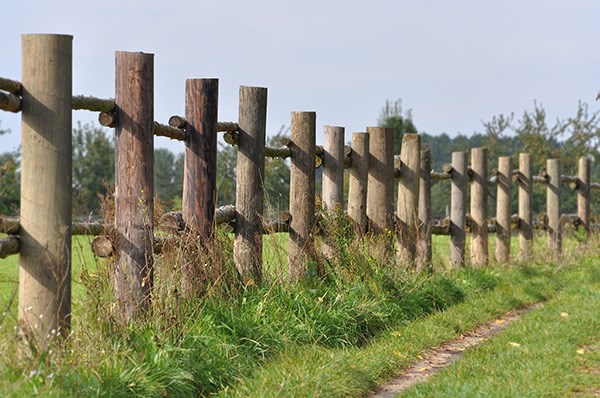Woodland and trees in the farmed landscape: viable farm-scale forestry, the missing cog
Reaching tree planting targets
Achieving ambitious tree planting targets is coupled with a desire to bring more woodlands into management and reduce reliance on timber imports. How is farm scale forestry relevant and could this be the missing cog to help connect these challenges and provide some of the solutions?
Currently on-farm woodlands are fragmented, undermanaged and contribute little to home-grown timber production. But, with more than 1.0 million hectares reported in 2022, they make up almost one-third of all UK woodland (Forestry Statistics, 2022).
A missed opportunity for farmers … but they’ll need convincing
And we are expecting this resource to grow, with expectations that our predominantly farmed landscapes in the UK will accommodate an additional X% tree cover by 2050 (substitute X for a number, depending on which nation of the UK is setting the target). How can this be a convincing proposition to farmers, when their existing farm woodland resource is generally considered unviable?
Forestry and farm woodland reports
Regenerative Forestry report examines the case for a more integrated approach to forestry and farming, alongside more climate, nature and people friendly forest management practices for all our forests and woodlands.
Woodlands and Trees in the Farmed Landscape sets out all the challenges and barriers for the integration of trees and woodlands into farming, while exploring the potential for an agroforestry and farm woodland economy in the UK.
Working with Cumulus Consultants, we built a model that doubled the area of farm woodland and agroforestry by 2050. We then explored the potential gains (both economic and environmental) and the steps required to get there.
One unshakeable truth emerges from both these reports, that if we are to realise the full potential for trees and timber and our sector as whole, then we need to pay much more attention to farm-scale forestry in the UK.

Large-scale forestry v farm-scale forestry
Timber production in the UK has benefited from sustained investment for almost the entire 20th century, either through large-scale afforestation by the Forestry Commission or by a combination of fiscal support and grants/regulation for the private sector. Alongside this there has been technical development, from tree breeding through to harvesting, as well as investment in processing and marketing of timber produced by this system.
Farm-scale forestry was disincentivised and not considered a valid option to establish a strategic reserve of timber. Even in more recent times and despite changing objectives, fledgling initiatives to support farm-forestry continue to be pigeon-holed as niche and have never received sustained funding.
Farmer-led woodland and agroforestry systems world-wide
Understanding this recent history is helpful to remind us of what is possible with focus, money and leadership. What if we had chosen a different path or even just a mixed path back in the early 20th century? Would we have viable farm-scale forestry models like those in France and Portugal, and much of wider Europe? Or more examples like those from Australia or North America or even many countries in sub-Saharan Africa or SE Asia where its mainly farmers who grow trees?
Defining farm-scale forestry
Trees in agroforestry systems and any other trees, woodlands or forestry assets that are on-farm and managed as part of the long-term economic sustainability and resilience of the farm enterprise, might be considered as farm-scale, as this integration and involvement by the farmer is key.
What we mean by viable, and for whom?
We should aim for more homegrown timber from farm-scale forestry. But other components of viability will also be important, including how the trees and woodlands support the productivity of other farm enterprises such as livestock production, or attract voluntary payments for natural capital or support agrotourism. In summary, we need an integrated and holistic perspective of viability at a farm enterprise level, which also includes the risks of not integrating trees into farming systems.
Changing mind-sets – from policy to farm practice
We need to get serious about making farm-scale forestry work in the UK by making sure that government and the wider forestry sector mobilise around the mission, with sustained investment so that trees are routinely and profitably grown on farm, in various systems, as part of the farm enterprise. This means
- tackling barriers along the whole supply chain
- giving farmers the confidence and knowledge as tree practitioners
- providing the market with a consistent product from timber producing woodlands
- providing investment and support for market development, so that we can utilise the timber produced in small-scale farm plantings
- promote timber as part of a decarbonised future
- invest in business models and cooperative working that suit small-scale enterprises
- invest in technical development that support innovation to deal with scale challenges
In summary …
None of this will be easy but viable farm scale forestry is now the major cog we need to get turning to break down the divide that has existed between farming and forestry for too long, so that we can make progress on the triple challenge of tree planting, woodland management and homegrown timber supply from our farmed landscapes.


